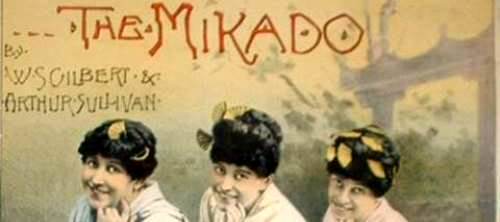
"The Mikado" est la neuvième des quatorze collaborations de Gilbert et Sullivan et est l'une des plus jouées du duo avec "The Pirates of Penzance" et "H.M.S. Pinafore".
La première représentation eut lieu le 14 mars 1885, à Londres, et se joua au Savoy Theatre pendant 672 représentations ce qui à l'époque, est la deuxième plus longue série de représentations d'une œuvre théâtrale musicale, et l'une des plus longues séries pour une œuvre théâtrale en général.
Certains airs de cet opéra comme "Three Little Maids from School" ou "I've Got a Little List" demeurent extrêmement populaires de nos jours dans la culture anglo-saxonne et ont connu de nombreuses adaptations et parodies.
Dans le Japon de fantaisie où nous entraînent les auteurs, les lois sont aussi bizarres que cruelles : on y est condamné à mort pour flirt ! C’est ce qui est arrivé dans la commune de Titipu au pauvre tailleur Ko-Ko, mais la ville s’oppose à la sévérité du Mikado en nommant Ko-Ko « Haut-bourreau-en-chef ». De cette façon, toute exécution cesse, puisque le nouveau promu ne saurait se couper la tête lui-même. Mais on annonce la venue du grand Mikado, empereur du Japon : il souhaite assister à une exécution capitale (son péché mignon). Comment le satisfaire quand on est un bourreau novice et incompétent, qu’on n’a aucun condamné, ni même de volontaire à se mettre sous le sabre ? De plus, voilà que sa propre fiancée est amoureuse d’un jeune musicien ambulant…
Acte I
Les habitants de la ville de Titipu sont rassemblés (If you want to know who we are). Le ménestrel Nanki-Poo entre alors sur scène et se présente (A wand'ring minstrel I). Il demande à la ronde des nouvelles de sa dulcinée, Yum-Yum, laquelle est fiancée au tailleur Ko-Ko.
Nanki-Poo a appris que Ko-Ko avait été condamné à mort pour flirt, et voit là une occasion de pouvoir s'entretenir avec Yum-Yum. Pish-Tush, un gentilhomme de passage, lui rappelle que le Mikado a effectivement passé un décret condamnant à mort les coureurs de jupons, causant de vives inquiétudes parmi toutes les couches de la population (Our great Mikado, virtuous man). Mais la lettre de la loi a été utilisée pour détourner l'esprit du décret : le premier sur la liste à devoir être exécuté, Ko-Ko, a été promu au rang de Haut-Bourreau. Il lui faudrait donc se couper lui-même la tête avant de couper celle des autres. Ceci ayant peu de chances de se produire, les exécutions sont suspendues.
De plus, le rang de Haut-Bourreau est le rang plus élevé auquel un citoyen peut prétendre. Les haut-fonctionnaires de l'état ne pouvant supporter être sous les ordres d'un ancien tailleur, ont tous démissionné. Seul Pooh-Bah s'est porté volontaire pour occuper tous leurs postes à la fois (et toucher tous leurs salaires).
Pooh-Bah apprend à Nanki-Poo que Yum-Yum épousera Ko-Ko dans la journée lorsqu'elle rentrera de l'école (Young man, despair).
Ko-Ko fait son entrée sur scène (Behold the Lord High Executioner). Il apprend à la population que si un jour il doit agir professionnellement, il a une petite liste de personnes à exécuter, parasites de la société et enquiquineurs, qui ne manqueront à personne (As some day it may happen).
Yum-Yum et deux de ses sœurs adoptives, Peep-Bo et Pitti-Sing, reviennent de leur école de jeunes filles (Comes a train of little ladies, Three little maids from school).
Nanki-Poo annonce à Ko-Ko son amour pour Yum-Yum (Were you not to Ko-Ko plighted). Ko-Ko ne s'en formalise pas mais le fait dégager. Ko-Ko invite ensuite ses filles à présenter leurs respects à Pooh-Bah avec les respects dus à son rang, mais ce dernier ne veut pas de formalités (So Please you Sir, we much regret).
Nanki-Poo arrive à s'entretenir avec Yum-Yum et lui apprend qu'il est le fils du Mikado, et a donc le rang qu'il sied pour l'épouser. Il lui révèle également qu'il a été contraint à se déguiser en ménestrel pour fuir une vieille femme de la cour de son père, Katisha, qui le poursuit de ses assiduités. Nanki-Poo et Yum-Yum se lamentent sur leur sort qui les empêche d'être unis (Were you not to Ko-Ko plighted).
Pish-Tush révèle qu'il est porteur d'un nouveau décret du Mikado. Si aucune exécution n'est menée dans le mois, le rang de Haut-Bourreau sera supprimé et la ville perdra son statut de cité et deviendra un village, ce qui occasionnera sa ruine. Ko-Ko s'interroge sur la personne à exécuter. Pish-Tush et Pooh-Bah lui font remarquer qu'il est le premier sur la liste des condamnés à morts. Ko-Ko fait remarquer que l'auto-décapitation est extrêmement difficile, dangereux, et que le suicide est un crime capital. Il nomme Pooh-Bah Haut-substitut, mais ce dernier refuse prestement cet honneur (I am so proud).
Ko-Ko se rend compte que Nanki-Poo est sur le point de se suicider par désespoir. Ko-Ko tente de le dissuader de cette idée dans un premier temps, puis passe un marché avec lui : il autorisera Nanki-Poo à épouser Yum-Yum si, au terme du mois, il accepte de se faire exécuter.
Le mariage de Nanki-Poo et Yum-Yum est célébré par la foule (With aspect stern and gloomy stride), mais les réjouissances sont interrompues par l'arrivée de Katisha qui réclame Nanki-Poo en épousailles. La foule éprouve de la sympathie envers Nanki-Poo et incite Katisha à partir. Cette dernière essaie de dévoiler le secret de Nanki-Poo, mais les chants de la foule couvrent sa voix. Elle quitta la scène en jurant de se venger.
Acte II
Yum-Yum se fait coiffer pour son mariage (Braid the raven hair) et s'extasie devant sa propre beauté, allant à se comparer à la Lune et au Soleil (The sun whose rays). Nanki-Poo cherche à se remonter le moral face à la courte durée de leur union (Brightly dawns our wedding-day). Malheureusement, Ko-Ko arrive avec de mauvaises nouvelles : selon une loi du Mikado, la femme d'un condamné à mort doit être enterrée vive. Cette loi n'a jamais été exécutée car le seul crime puni de mort est le flirt, lequel n'est pas pratiqué par les hommes mariés.
L'idée du mariage apparaît moins attrayante à Yum-Yum et Nanki-Poo hésite entre tenir sa promesse de se marier et vouer sa femme à une mort horrible, ou se faire exécuter avant le mariage et savoir que Ko-Ko épousera Yum-Yum (Here's a how-de-do!").
Tous apprennent l'arrivée imminente du Mikado. Nanki-Poo demande que Ko-Ko le décapite séance tenante, mais il s'avère que Ko-Ko a trop bon cœur et est incapable de tuer ne serait-ce qu'une mouche. Ko-Ko envoie Nanki-Poo et Yum-Yum se marier en cachette ; il promet de mentir au Mikado et de présenter de fausses preuves du bon déroulement de l'exécution.
Le Mikado arrive avec sa procession, accompagné de Katisha, laquelle ne manque pas la moindre occasion de se mettre en avant (Miya-sama). Le Mikado se présente comme un philanthrope, qui aspire à ce qu'un jour son système de punition soit parfait (A more humane Mikado). Ko-Ko, croyant que le Mikado vient vérifier le bon déroulement de l'exécution, invente une description fort imagée de celle-ci (The criminal cried), aidé de Pitti-Sing et Pooh-Bah, ce dernier représentant nombre de témoins.
Le Mikado annonce cependant le véritable objet de sa visite : il est à la recherche de son fils. Apprenant le nom du fils du Mikado, tous paniquent et prétendent que celui-ci est parti à l'étranger. Mais Katisha lit le nom du condamné à mort sur les certificats de décès.
Le Mikado se montre pleinement compréhensif (See How the Fates), mais malheureusement une loi punit les régicides, même par ignorance. Le Mikado discute avec Katisha des tortures horribles qui attendent Ko-Ko, Pooh-Bah et Pitti-Sing.
En attendant son exécution, Ko-Ko tente de convaincre Nanki-Poo de revenir, mais celui-ci redoute Katisha. Il propose à Ko-Ko de la demander en mariage : une fois celle-ci mariée, elle ne pourra plus nuire à Nanki-Poo et il pourra sortir de sa retraite sans crainte (The flowers that bloom in the spring). L'idée ne plait guère à Ko-Ko, mais il s'y résigne.
Trouvant Katisha en train de porter le deuil de Nanki-Poo (Alone, and yet alive), il se jette à ses pieds et la demande en mariage. Katisha le rejette au début, puis se montre sensible (Tit-willow) et accepte (There is beauty in the bellow of the blast).
Une fois le mariage célébré, elle demande au Mikado grâce pour Ko-Ko et ses compagnons. Nanki-Poo se présente alors, provoquant la fureur de Katisha.
Le Mikado est étonné de voir Nanki-Poo en vie alors qu'on lui avait décrit l'exécution avec force détails. Ko-Ko se justifie en expliquant que dès lors qu'un ordre impérial a été proclamé, le condamné est légalement mort avant même son exécution, et que s'il est mort, pourquoi ne pas le dire ? L'explication ravit le Mikado et Titipu célèbre le mariage de Nanki-Poo et Yum-Yum (For he's gone and married Yum-Yum).
1 Mikado (The) peut-être considéré comme un Top musical
Origines
Gilbert and Sullivan's opera immediately preceding The Mikado was Princess Ida (1884), which ran for nine months, a short duration by Savoy opera standards. When ticket sales for Princess Ida showed early signs of flagging, the impresario Richard D'Oyly Carte realised that, for the first time since 1877, no new Gilbert and Sullivan work would be ready when the old one closed. On 22 March 1884, Carte gave Gilbert and Sullivan contractual notice that a new opera would be required within six months. Sullivan's close friend, the conductor Frederic Clay, had suffered a serious stroke in December 1883 that effectively ended his career. Reflecting on this, on his own precarious health, and on his desire to devote himself to more serious music, Sullivan replied to Carte that "it is impossible for me to do another piece of the character of those already written by Gilbert and myself". Gilbert, who had already started work on a new libretto in which people fall in love against their wills after taking a magic lozenge, was surprised to hear of Sullivan's hesitation. He wrote to Sullivan asking him to reconsider, but the composer replied on 2 April 1884 that he had "come to the end of my tether" with the operas: “...I have been continually keeping down the music in order that not one [syllable] should be lost.... I should like to set a story of human interest & probability where the humorous words would come in a humorous (not serious) situation, & where, if the situation were a tender or dramatic one the words would be of similar character”.
Gilbert wrote that Sullivan's letter caused him "considerable pain". Sullivan responded that he could not set the "lozenge plot", stating that it was too similar to the plot of their 1877 opera The Sorcerer. As April 1884 wore on, Gilbert tried to modify his plot, but he could not satisfy Sullivan. The parties were at a stalemate, and Gilbert wrote, "And so ends a musical & literary association of seven years' standing – an association of exceptional reputation – an association unequaled in its monetary results, and hitherto undisturbed by a single jarring or discordant element." But by 8 May 1884, Gilbert was ready to back down, writing: "am I to understand that if I construct another plot in which no supernatural element occurs, you will undertake to set it? ... a consistent plot, free from anachronisms, constructed in perfect good faith & to the best of my ability." The stalemate was broken, and on 20 May, Gilbert sent Sullivan a sketch of the plot to The Mikado. It would take another ten months for The Mikado to reach the stage. A revised version of The Sorcerer coupled with their one-act piece Trial by Jury (1875) played at the Savoy while Carte and their audiences awaited their next work. Gilbert eventually found a place for his "lozenge plot" in The Mountebanks, written with Alfred Cellier in 1892.
In 1914, Cellier and Bridgeman first recorded the familiar story of how Gilbert found his inspiration: “
Gilbert, having determined to leave his own country alone for a while, sought elsewhere for a subject suitable to his peculiar humour. A trifling accident inspired him with an idea. One day an old Japanese sword that, for years, had been hanging on the wall of his study, fell from its place. This incident directed his attention to Japan. Just at that time a company of Japanese had arrived in England and set up a little village of their own in Knightsbridge.”
The story is an appealing one, but it is largely fictional. Gilbert was interviewed twice about his inspiration for The Mikado. In both interviews the sword was mentioned, and in one of them he said it was the inspiration for the opera, though he never said the sword had fallen. What puts the entire story in doubt is Cellier and Bridgeman's error concerning the Japanese exhibition in Knightsbridge: it did not open until 10 January 1885, almost two months after Gilbert had already completed Act I. Gilbert scholar Brian Jones, in his article "The Sword that Never Fell", notes that "the further removed in time the writer is from the incident, the more graphically it is recalled." Leslie Baily, for instance, told it this way in 1952: “A day or so later Gilbert was striding up and down his library in the new house at Harrington Gardens, fuming at the impasse, when a huge Japanese sword decorating the wall fell with a clatter to the floor. Gilbert picked it up. His perambulations stopped. 'It suggested the broad idea,' as he said later. His journalistic mind, always quick to seize on topicalities, turned to a Japanese Exhibition which had recently been opened in the neighbourhood. Gilbert had seen the little Japanese men and women from the Exhibition shuffling in their exotic robes through the streets of Knightsbridge. Now he sat at his writing desk and picked up the quill pen. He began making notes in his plot-book.”
The story was dramatised in more or less this form in the 1999 film Topsy-Turvy. But although the 1885–87 Japanese exhibition in Knightsbridge had not opened when Gilbert conceived of The Mikado, European trade with Japan had increased in recent decades, and an English craze for all things Japanese had built through the 1860s and 1870s. This made the time ripe for an opera set in Japan. Gilbert told a journalist, "I cannot give you a good reason for our ... piece being laid in Japan. It ... afforded scope for picturesque treatment, scenery and costume, and I think that the idea of a chief magistrate, who is ... judge and actual executioner in one, and yet would not hurt a worm, may perhaps please the public."
In an 1885 interview with the New-York Daily Tribune, Gilbert said that the short stature of Leonora Braham, Jessie Bond and Sybil Grey "suggested the advisability of grouping them as three Japanese school-girls", the opera's "three little maids". He also recounted that a young Japanese lady, a tea server at the Japanese village, came to rehearsals to coach the three little maids in Japanese dance. On 12 February 1885, one month before The Mikado opened, The Illustrated London News wrote about the opening of the Japanese village noting, among other things, that "the graceful, fantastic dancing featured ... three little maids!" In the Tribune interview, Gilbert also related that he and Sullivan had decided to cut the only solo sung by the opera's title character (who appears only in Act II, played by Savoy veteran Richard Temple), but that members of the company and others who had witnessed the dress rehearsal "came to us in a body and begged us to restore the excised 'number'".
Productions
The Mikado had the longest original run of the Savoy Operas. It also had the quickest revival: after Gilbert and Sullivan's next work, Ruddigore, closed relatively quickly, three operas were revived to fill the interregnum until The Yeomen of the Guard was ready, including The Mikado, just 17 months after its first run closed. On 4 September 1891, D'Oyly Carte's touring "C" company gave a Royal Command Performance of The Mikado at Balmoral Castle before Queen Victoria and the Royal Family. The original set design was by Hawes Craven, with men's costumes by C. Wilhelm. The first provincial production of The Mikado opened on 27 July 1885 in Brighton, with several members of that company leaving in August to present the first authorised American production in New York. From then on, The Mikado was a constant presence on tour. From 1885 until the Company's closure in 1982, there was no year in which a D'Oyly Carte company (or several of them) was not presenting it.
The Mikado was revived again while The Grand Duke was in preparation. When it became clear that that opera was not a success, The Mikado was given at matinees, and the revival continued when The Grand Duke closed after just three months. In 1906–07, Helen Carte, the widow of Richard D'Oyly Carte, mounted a repertory season at the Savoy, but The Mikado was not performed, as it was thought that visiting Japanese royalty might be offended by it. It was included, however, in Mrs. Carte's second repertory season, in 1908–09. New costume designs were created by Charles Ricketts for the 1926 season and were used until 1982. Peter Goffin designed new sets in 1952.
In America, as had happened with H.M.S. Pinafore, the first productions were unauthorised, but once D'Oyly Carte's American production opened in August 1885, it was a success, earning record profits, and Carte formed several companies to tour the show in North America. Burlesque and parody productions, including political parodies, were mounted. More than 150 unauthorised versions cropped up, and, as had been the case with Pinafore, Carte, Gilbert and Sullivan could do nothing to prevent them or to capture any license fees, since there was no international copyright treaty at the time. Gilbert, Sullivan and Carte tried various techniques for gaining an American copyright that would prevent unauthorised productions. The U.S. courts held, however, that the act of publication made the opera freely available for production by anyone. In Australia, The Mikado's first authorised performance was on 14 November 1885 at the Theatre Royal, Sydney, produced by J. C. Williamson. During 1886, Carte was touring five Mikado companies in North America.
Carte toured the opera in 1886 and again in 1887 in Germany and elsewhere in Europe. In September 1886 Vienna's leading critic, Eduard Hanslick, wrote that the opera's "unparalleled success" was attributable not only to the libretto and the music, but also to "the wholly original stage performance, unique of its kind, by Mr D'Oyly Carte's artists... riveting the eye and ear with its exotic allurement." Authorised productions were also seen in France, Holland, Hungary, Spain, Belgium, Scandinavia, Russia and elsewhere. Thousands of amateur productions have been mounted throughout the English-speaking world and beyond since the 1880s. One production during World War I was given in the Ruhleben internment camp in Germany.
After the Gilbert copyrights expired in 1962, the Sadler's Wells Opera mounted the first non-D'Oyly Carte professional production in England, with Clive Revill as Ko-Ko. Among the many professional revivals since then was an English National Opera production in 1986, with Eric Idle as Ko-Ko and Lesley Garrett as Yum-Yum, directed by Jonathan Miller. This production, which has been revived numerous times over three decades, is set in a swanky 1920s English seaside hotel, with sets and costumes in black and white "as an homage to the Marx Brothers, Noël Coward, and Busby Berkeley". Canada's Stratford Festival has produced The Mikado several times, first in 1963 and again in 1982 (revived in 1983 and 1984) and in 1993.
Overture (Includes "Mi-ya Sa-ma", "The Sun Whose Rays Are All Ablaze", "There is Beauty in the Bellow of the Blast", "Braid the Raven Hair" and "With Aspect Stern and Gloomy Stride")
Act I
1. "If you want to know who we are" (Chorus of Men)
2. "A Wand'ring Minstrel I" (Nanki-Poo and Men)
3. "Our Great Mikado, virtuous man" (Pish-Tush and Men)
4. "Young man, despair" (Pooh-Bah, Nanki-Poo and Pish-Tush)
4a. Recit., "And have I journey'd for a month" (Pooh-Bah, Nanki-Poo)
5. "Behold the Lord High Executioner" (Ko-Ko and Men)
5a. "As some day it may happen" ("I've Got a Little List") (Ko-Ko and Men)
6. "Comes a train of little ladies" (Girls)
7. "Three little maids from school are we" (Yum-Yum, Peep-Bo, Pitti-Sing, and Girls)
8. "So please you, Sir, we much regret" (Yum-Yum, Peep-Bo, Pitti-Sing, Pooh-Bah, and Girls)[n 4]
9. "Were you not to Ko-Ko plighted" (Yum-Yum and Nanki-Poo)
10. "I am so proud" (Pooh-Bah, Ko-Ko and Pish-Tush)
11. Finale Act I (Ensemble)
"With aspect stern and gloomy stride"
"The threatened cloud has passed away"
"Your revels cease!" ... "Oh fool, that fleest my hallowed joys!"
"For he's going to marry Yum-Yum"
"The hour of gladness" ... "O ni! bikkuri shakkuri to!"
"Ye torrents roar!"
Acte II
12. "Braid the raven hair" (Pitti-Sing and Girls)
13. "The sun whose rays are all ablaze" (Yum-Yum) (Originally in Act I, moved to Act II shortly after the opening night)
14. Madrigal, "Brightly dawns our wedding day" (Yum-Yum, Pitti-Sing, Nanki-Poo and Pish-Tush)
15. "Here's a how-de-do" (Yum-Yum, Nanki-Poo and Ko-Ko)
16. "Mi-ya Sa-ma"[18] "From every kind of man obedience I expect" (Mikado, Katisha, Chorus)
17. "A more humane Mikado" (Mikado, Chorus) (This song was nearly cut, but was restored shortly before the first night.)
18. "The criminal cried as he dropped him down" (Ko-Ko, Pitti-Sing, Pooh-Bah, Chorus)
19. "See how the Fates their gifts allot" (Mikado, Pitti-Sing, Pooh-Bah, Ko-Ko and Katisha)
20. "The flowers that bloom in the spring" (Nanki-Poo, Ko-Ko, Yum-Yum, Pitti-Sing, and Pooh-Bah)
21. Recit. and song, "Alone, and yet alive" (Katisha)
22. "On a tree by a river" ("Willow, tit-willow") (Ko-Ko)
23. "There is beauty in the bellow of the blast" (Katisha and Ko-Ko)
24. "Finale Act II" (Ensemble)
"For he's gone and married Yum-Yum"
"The threatened cloud has passed away"
The Mikado of Japan (bass or bass-baritone)
Nanki-Poo, His Son, disguised as a wandering minstrel and in love with Yum-Yum (tenor)
Ko-Ko, The Lord High Executioner of Titipu (comic baritone)
Pooh-Bah, Lord High Everything Else (baritone)
Pish-Tush, A Noble Lord (baritone[n 2])
Go-To, A Noble Lord (bass)[n 2]
Yum-Yum, A Ward of Ko-Ko, also engaged to Ko-Ko (soprano)
Pitti-Sing, A Ward of Ko-Ko (mezzo-soprano)
Peep-Bo, A Ward of Ko-Ko (soprano or mezzo-soprano)
Katisha, An Elderly lady, in love with Nanki-Poo (contralto)
Chorus of School-Girls, Nobles, Guards and Coolies
Aucun dossier informatif complémentaire concernant Mikado (The)
Aucun dossier informatif complémentaire concernant Mikado (The)
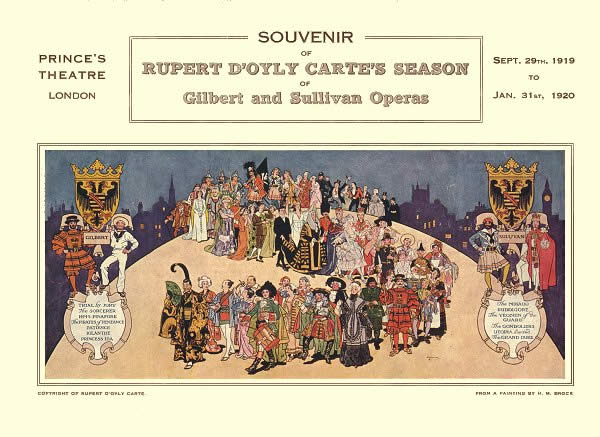
Version 1
Mikado (The) (1919-09-Prince's Theatre-London) G&S Season
Type de série: RevivalThéâtre: Shaftesbury Theatre (Londres - Angleterre) Durée : 4 mois Nombre : Première Preview : 29 September 1919
Première: 29 September 1919
Dernière: 31 January 1920Mise en scène : Chorégraphie : Producteur : D'Oyly Carte Opera Company • Star(s) : Presse : "L'admirable compagnie se distingue par l'inclusion d'un nouveau ténor, M. Derek Oldham, dont la présence et les manières agréables, les capacités d'acteur et la voix exquise ravissent autant que celles de n'importe quel Marco que j'ai vu et entendu. Le duc de M. Henry Lytton, le Don Alhambra de M. Leo Sheffield et la duchesse de Miss Bertha Lewis sont tous en accord avec les traditions du pays, tandis que Miss Elsie Griffin et Miss Nellie Briercliffe formaient un couple d'épouses satisfaisant. L'enthousiasme du public était sans limite." - London Sunday Times
"Après quatre années de guerre et les misères qui en découlent, que se soucie le public britannique d'un inconvénient aussi insignifiant qu'une simple grève des chemins de fer ? Certainement pas assez pour se permettre d'être tenu à l'écart d'un événement aussi primordial que la reprise de Gilbert et Sullivan au Prince's Theatre, où un public immense était venu accueillir l'excellente compagnie de M. D'Oyly Carte lors de sa première visite au centre de Londres. C'était un public brillant et il comprenait non seulement de nombreuses personnalités sociales, théâtrales et musicales de l'époque, mais aussi un certain nombre de ces vieux Savoyards aux noms desquels les opéras de Gilbert et de Sullivan doivent toujours être irrévocablement associés. Miss Jessie Bond, Miss Geraldine Ulmar et M. Rutland Barrington étaient tous là." - Daily Telegraph
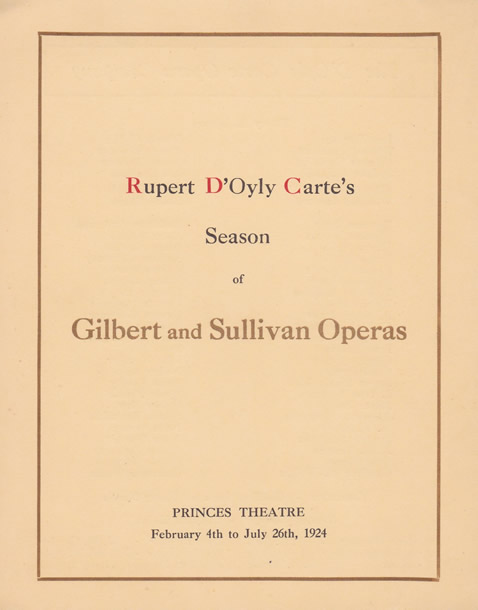
Version 2
Mikado (The) (1924-02-Prince's Theatre-London) G&S Season
Type de série: RevivalThéâtre: Shaftesbury Theatre (Londres - Angleterre) Durée : 5 mois 3 semaines Nombre : Première Preview : 04 February 1924
Première: 04 February 1924
Dernière: 26 July 1924Mise en scène : Chorégraphie : Producteur : D'Oyly Carte Opera Company • Star(s) :
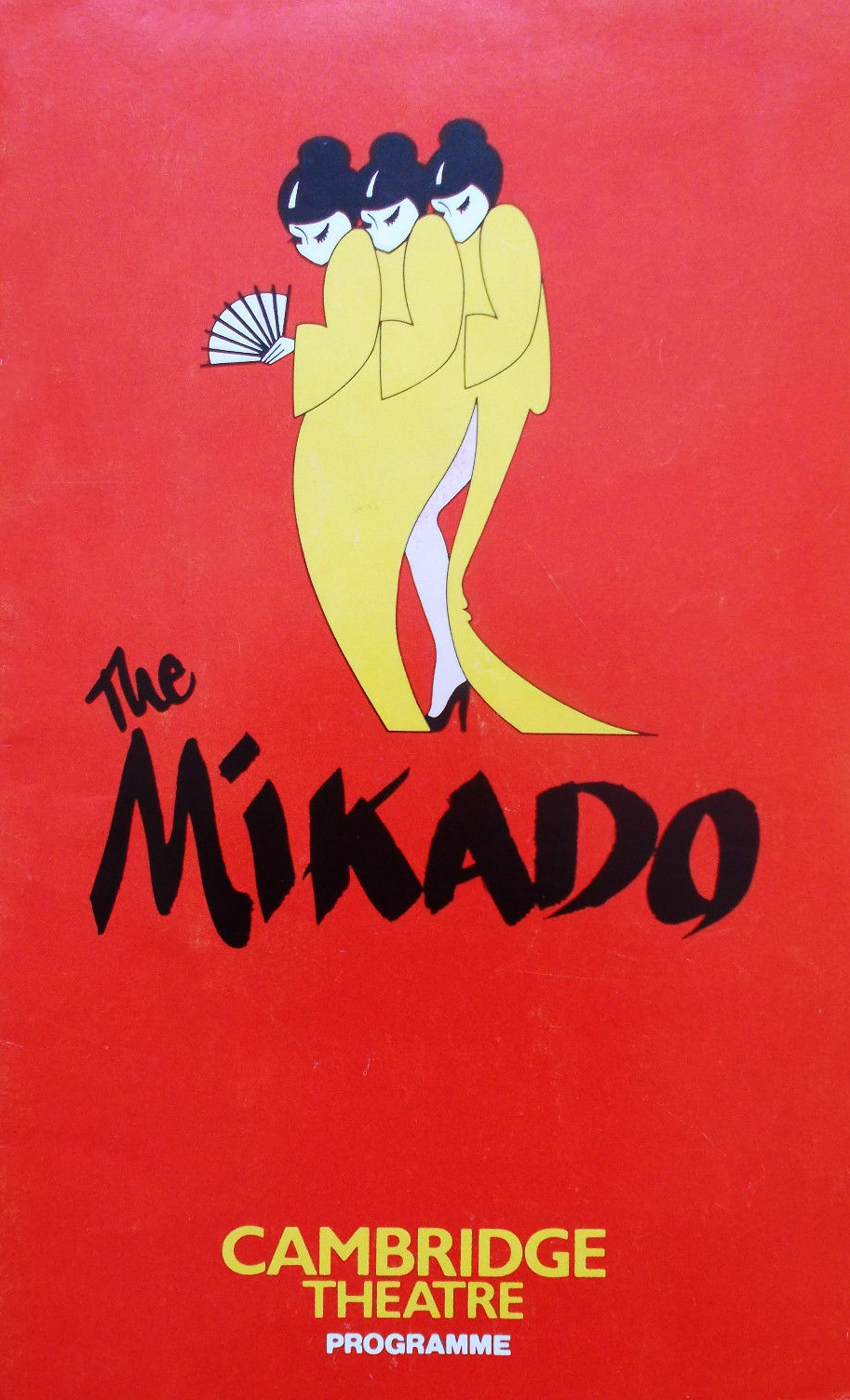
Version 3
Mikado (The) (1982-09-Cambridge Theatre-London)
Type de série: OriginalThéâtre: Cambridge Theatre (Londres - Angleterre) Durée : 3 mois 1 semaine Nombre : Première Preview : Inconnu
Première: 28 September 1982
Dernière: 08 January 1983Mise en scène : Chris Hayes • Chorégraphie : Michele Hardy • Producteur : Star(s) : Avec: Murray Melvin (Ko-Ko), Nicholas Smith (Mikado), Gary Lyons (Nanki Poo), John Hewer (Pooh-Bah), Stella Goodier (Yum Yum), Eileen Gourlay (Katisha)Commentaires : This was a Theatre Royal Plymouth Production.

Version 4
Mikado (The) (1983-08-Prince of Wales Theatre-London)
Type de série: RepriseThéâtre: Prince of Wales Theatre (Londres - Angleterre) Durée : 1 mois 1 semaine Nombre : Première Preview : Inconnu
Première: 16 August 1983
Dernière: 24 September 1983Mise en scène : Chris Hayes • Chorégraphie : Michele Hardy • Producteur : Star(s) : Avec: Jimmy Thompson (Ko-Ko), Nicholas Smith (Mikado), Gary Lyons (Nanki Poo), John Hewer (Pooh-Bah), Stella Goodier (Yum Yum), Eileen Gourlay (Katisha), Christopher MarloweCommentaires : This was a return visit from the same production which had played the Cambridge Theatre the previous year and had been touring meantime.
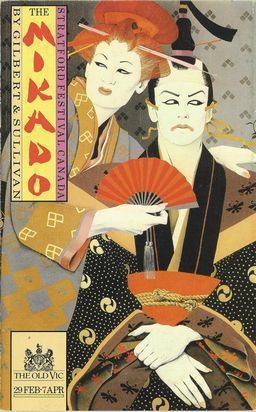
Version 5
Mikado (The) (1984-02-Old Vic-London)
Type de série: RevivalThéâtre: Old Vic (Londres - Angleterre) Durée : 1 mois Nombre : 45 représentationsPremière Preview : Inconnu
Première: 29 February 1984
Dernière: 07 April 1984Mise en scène : Brian MacDonald • Chorégraphie : Producteur : Star(s) : Avec: Eric Donkin (Ko-Ko), Avo Kittask (Mikado), John Keane (Nanki Poo), Richard McMillan (Pooh-Bah), Marie Barron (Yum Yum), Christina James (Katisha), Karen Wood, Karen SkidmoreCommentaires : This was a production by a visiting Canadian company but competed with simultaneous G&S productions at Sadler’s Wells and the Coliseum. The critics were generally scathing of this visitor.

Version 6
Mikado (The) (2008-01-Gielgud Theatre-London)
Type de série: RevivalThéâtre: Gielgud Theatre (Londres - Angleterre) Durée : 1 mois Nombre : Première Preview : 30 January 2008
Première: 30 January 2008
Dernière: 01 March 2008Mise en scène : Peter Mulloy • Chorégraphie : Peter Mulloy • Producteur : Star(s) : Avec: Alistair McGowan ( Mikado), Nichola McAuliffe (Katisha), Andrew Rees (Nanki-Poo), Fenton Gray (Ko-Ko), Bruce Graham (Pooh-Bah), Steven Page (Pish-Tush), Charlotte Page (Yum-Yum) , Sophie-Louise Dann (Pitti-Sing), Lesley Cox (Peep-Bo)

Version 7
Mikado (The) (2008-07-Union Theatre-London)
Type de série: RevivalThéâtre: Union Theatre (Londres - Angleterre) Durée : 3 semaines Nombre : Première Preview : 23 July 2008
Première: 23 July 2008
Dernière: 16 August 2008Mise en scène : Thom Southerland • Chorégraphie : Vanessa Fenton • Producteur : Star(s) : Avec: Christopher Howell ( Ko-Ko ), Jacob Chapman (Mikado), Damion Scaecella (Nanki Poo), Stuart Armfield (Pooh-Bah), Martin Milnes ( Yum Yum ), Samuel J. Holmes (Katisha), David Grewcock (Pish-Tush), Patrick Kelliher (Pitti-Sing), Nathan Kiley (Peep-Bo)Commentaires : With piano accompaniment and a 13-strong all-male cast this was regarded as great fun. It was the second production of “Mikado” in 2008.
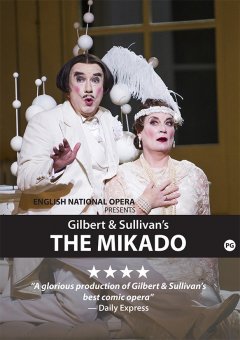
Version 8
Mikado (The) (2015-11-Coliseum Theatre-London)
Type de série: RevivalThéâtre: Coliseum Theatre (Londres - Angleterre) Durée : 2 mois 2 semaines Nombre : Première Preview : 21 November 2015
Première: 21 November 2015
Dernière: 06 February 2016Mise en scène : Jonathan Miller • Elaine Tyler-Hall • Chorégraphie : Anthony Van Laast • Producteur : Star(s) : Avec: Richard Suart (Ko-Ko), Anthony Gregory (Nanki-Poo), Mary Bevan (Yum-Yum), Graeme Danby (Pooh-Bah), Yvonne Howard (Katisha), Robert Lloyd (The Mikado of Japan), George Humphreys (Pish-Tush), Rachael Lloyd (Pitti-Sing)
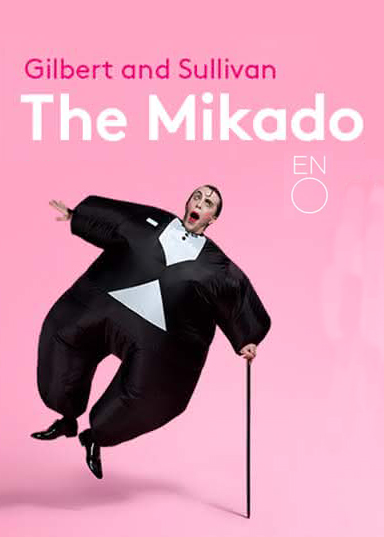
Version 9
Mikado (The) (2019-10-Coliseum Theatre-London)
Type de série: RevivalThéâtre: Coliseum Theatre (Londres - Angleterre) Durée : 1 mois Nombre : 9 représentationsPremière Preview : 28 October 2019
Première: 28 October 2019
Dernière: 30 November 2019Mise en scène : Jonathan Miller • Chorégraphie : Producteur : Star(s) : Avec: John Tomlinson, Elgan Llŷr Thomas, Richard Suart, Andrew Shore, Ben McAteer, Soraya Mafi, Sioned Gwen Davies and Yvonne Howard.Commentaires : Une production de l'ENO
Pas encore de video disponible pour ce spectacle